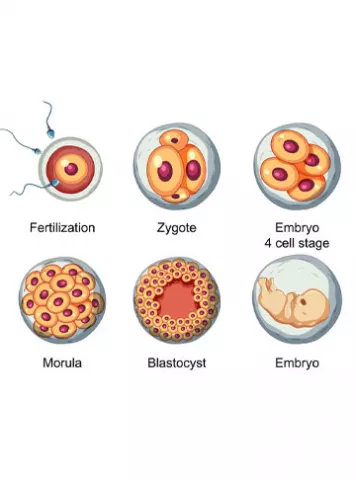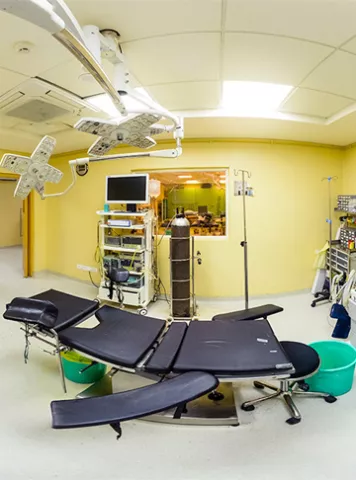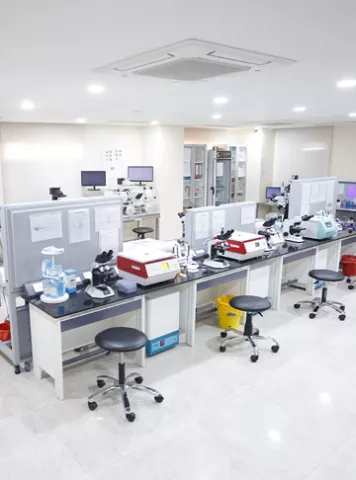Synopsis
Even though science can give a lot of options, it is not necessary that the choices it presents are easy to make. Dr. Hishey ( Indira IVF hospital), explained “When a patient opts for, In Vitro Fertilization (IVF), a medical...
Embryo Transfer
Even though science can give a lot of options, it is not necessary that the choices it presents are easy to make. Dr. Hishey ( Indira IVF hospital), explained “When a patient opts for, In Vitro Fertilization (IVF), a medical procedure in which an egg is fertilized by the sperm outside the body, the critical decision that needs to be taken is the number of embryos that are to be transferred for a potential pregnancy. As both methods come with potential risks and advantages, it is preferable that more embryos should be assigned for successful implantation. But, the catch is – multiple embryos are more likely to result in multiple pregnancies”.
When we obtain more than one viable embryo which is to be considered for transfer to the female parent or surrogate, we can substantially increase the chance of pregnancy, i.e., the success of IVF. The availability of multiple viable embryos helps Gynecologist in the grading of specimens, and makes a better selection for the transfer.
The implantation rate is a critical statistic that comes into play here. The implantation rate depends on the proportion of transferred embryos that are implanted in the uterine lining as long as a fetal heartbeat is detected. Therefore, the ratio of fetal hearts to placed embryos is the implantation rate.
A factor that comes into play during the IVF implantation is the age of the female, as the quality of the eggs is subject to deterioration by age. The embryo obtained from the eggs of a 40-year-old woman has an average of 10-15% chance of implantation, as opposed to the 40-50% chance of that of a 30-year-old woman.
There are certain ways to increase the implantation rate, one of which is the genetic screening of the embryos, before transfer. The transfer of embryos into a uterine environment that still has not been pertained to ovarian stimulation, such as oocyte donation cycles, frozen embryos or other gestational carrier cycles have an ideal implantation rate of 70-80% or even higher – Single Embryo Transfer.
Once the implantation rate is assessed, we can have a clear analysis of the number of embryo transfer. The better the implantation rate, the lesser the need for multiple embryo transfers.
Choosing the number of embryos that are to be transferred is a crucial decision that has long term effects. Most patients aren’t even given the privilege to discuss before making that decision. In a survey of over 400 IVF patients, it was found out that only 20% of them discussed the number of embryos to be transferred before the procedure.
Pros and Cons of Single/Multiple Embryo Transfer
Dr. Deeksha Tiwari(Gynaecologist & IVF Specialist at Indira IVF, Indore) stated that, “the two benefits of transferring multiple embryos are fast results and a higher rate of success.
However, the cons of multiple embryos transfer also make to the list, which is – multiple pregnancies, patient fatigue and an additional cost of transmission, which ranges upto $3000.
And so, there is a statute on the number of embryos which can be transferred per procedure. Although the final say belongs to the physician in charge, for a 41-42-year-old woman, the maximum transfer can be of five embryos. Whereas the patient is in their 30s, the count is maximum of three. High-volume pregnancies face a multitude of health complications than single or twin pregnancies. For that matter, twin pregnancies carry their own set of serious complications for both mother and the baby. Twin pregnancies can be avoided even in multiple embryo transfers if the placement takes place one at a time.
Embryo Transfer Success Rate
Dr. Jyoti Gupta (Gynaecologist & IVF Specialist at Indira IVF, Faridabad), stated that “In a test conducted over 144 women, who were found to have more than four viable embryos available, it was determined that the clinical pregnancy on the transfer of a single embryo was 32.4% and in the multiple embryo transfer, it was 47.1%. As you can see, the difference isn’t that remarkable. In the same pool, there were eleven twin deliveries. If we cumulate the results, there was a 47.3% success rate per patient in a single embryo transfer and 58.6% in multiple embryo transfers”.
In conclusion, women with good and viable embryos, when taking their first IVF, can have a significant chance of success, without the need to insert multiple embryos – thus saving themselves from an array of complications.
Here are some essential tips for making your embryo transfer a success:
- Experience and skill of the doctor
- As you are the patient, you should be in charge of your procedure and is it totally up to you to select a physician who is not only skilled but carries a lot experience in their shoulders, because it matters. From the primary ultra-sound to the final transfer, the doctor plays a crucial role in the success of your procedure.
- Take a mock run of the process
- Go through a mock run of the procedure, as it prepares your body and betters your chances of success.
- Steer clear of the hydrosalpinx
- Hydrosalpinx, a fluid which is present in one or both fallopian tubes, can be associated with STDs. It hinders your chances of impregnation and therefore, must be checked by the doctor.
- Run multiple tests
- They are a number of tests involved in every step of the procedure, make sure you don’t skip on any of those.
- Multivitamin tablets, along with folic acid
- Folic acid supplements helps as the superagent which reduces the risk of defects. You must start taking it atleast three months before your procedure. You can consult your doctor about the Vitamin dosages as well.
- Don’t sleep after your embryo transfer
- Bed rest after transfer does not aid in implantation and pregnancy. It’s a myth which must be avoided. You should rather have a normal approach to your day after your procedure.
- Say no to alcohol or any strenuous exercise
- You must abstain yourself from all kinds of alcohol and other activities that strain your body.
- Avoid catching a cold
- Inform your doctor in case you have a cold. The acts of sneezing and coughing can seriously reduce your chances of implantation.
- Have a happy and positive mindset
- Keep yourself stress-free, as it is found to be working against you at all times. Patients who had a good laugh and a happy mindset have a clinical rate of higher success at implantation.
- Own you IVF
- It is essential that you can full ownership of your procedure and act accordingly. From religiously following the advice of the doctor to taking absolute care of yourself, you must be 100% in charge of your body.
Comments
Articles
2022


Guide to infertility treatments Blastocyst Culture And Transfer
6 Sexually Transmitted Diseases (STDs) that can make you infertile!
The relation between STD & Infertility- Besides preventing pregnancy, t...
2022


Guide to infertility treatments Blastocyst Culture And Transfer
Patient’s Guide to IVF – Post Embryo Transfer DO’s and DONT’s
Although there are not many things that an IVF patient, who has recently got a...
2022


Guide to infertility treatments Blastocyst Culture And Transfer
IVF Process in 3 Simple Steps: Stimulate, Retrieve, Transfer
INTRODUCTION IVF, In vitro fertilization, is an infertility treatment of fe...
2022


Guide to infertility treatments Blastocyst Culture And Transfer
Step by Step- Embryo Transfer
The IVF procedure culminates with embryo transfer. It is very important to mak...
2022


Guide to infertility treatments Blastocyst Culture And Transfer
How Many Embryos Should I Transfer
Embryos Transfer – Introduction The 1st successful invitro fertilisation ...
2022


Guide to infertility treatments Blastocyst Culture And Transfer
What Is The Best Advice After Embryo Transfer
In Vitro Fertilisation, popularly referred as IVF has captured attention since...
2022


Guide to infertility treatments Blastocyst Culture And Transfer
Elective single embryo transfer (eSET): A safe option in IVF
What is Single Embryo transfer or SET? Single embryo transfer (SET)is an el...
2022


Guide to infertility treatments Blastocyst Culture And Transfer
Embryo Transfer Process
What is Embryo Transfer ? ▪ Embryo Transfer is a very crucial step in IVF...
2022


Guide to infertility treatments Blastocyst Culture And Transfer
What are the Benefits of Frozen Embryo transfer?
Frozen Embryo Childlessness was considered a social stigma since ages. Mill...
2022


Guide to infertility treatments Blastocyst Culture And Transfer
Quality control (QC) concerning pH, temperature and osmolality in the embryology lab
The efficiency of the embryology lab protocols can be improved by conducting r...
Tools to help you plan better
Get quick understanding of your fertility cycle and accordingly make a schedule to track it















